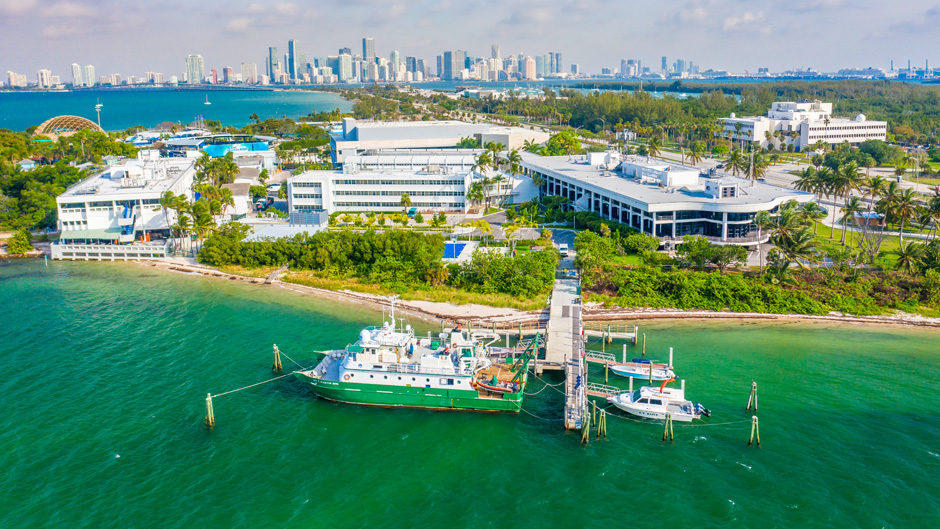It was simply called the Marine Laboratory when University of Miami trustees established it in the early 1940s. Back then, it operated on a shoestring budget out of a boathouse on Belle Isle in Miami Beach, focusing on oceanographic research.
The lab would eventually move into new digs on Virginia Key. And in 1969, the lab attained status as one of the University’s degree-granting schools, becoming the Dorothy and Lewis Rosenstiel School of Marine and Atmospheric Science in recognition of a major gift.
Now, the school has expanded its name to better reflect the breadth and depth of its research and teaching, which have grown exponentially over the past few years to include studies not only of the earth’s atmosphere and oceans but of its geology.
The new name, the Rosenstiel School of Marine, Atmospheric, and Earth Science, became official in June.
“The new name is an accurate reflection of the scope and scale of the research and educational opportunities the Rosenstiel School now offers,” said Jeffrey Duerk, executive vice president for academic affairs and provost.
“While it started out as a marine-focused laboratory, its evolution into a school that contributes knowledge and academic inquiry on the entirety of the Earth is well-documented,” he said. “The new name allows the school to be recognized for its overall work rather than being solely in the focused areas of marine and atmospheric science, and at the same time it preserves its historical founding.”
Rosenstiel School dean Roni Avissar echoed Duerk’s sentiments. “From our humble beginnings, we’ve advanced considerably in terms of academics and research, especially in the past 10 years,” he said. “Our research endeavors now encompass all the components of the Earth system. So, the name change couldn’t be more appropriate.”
Along with the name change, the school now has a new URL, https://earth.miami.edu, and Twitter handle, @MiamiRosenstiel, to boot. Email addresses also have been updated to reflect the name change.
“The environmental challenges faced by our planet, most notably in the burgeoning climate emergency, which affects everything from the atmosphere and oceans to rainforests and wildlife, seem insurmountable,” Avissar said. “But the Rosenstiel School has been at the forefront in helping to solve those problems for many years. And now we have a name that reflects our complete mission.”
Avissar noted recent achievements that are helping to accomplish that mission, including reorganizing the school into five departments: Ocean Sciences, Marine Geosciences, Marine Biology and Ecology, Atmospheric Sciences, and Environmental Science and Policy.
New graduate and undergraduate programs aligned with those departments are attracting talented students at all degree levels, Avissar said.
Meanwhile, the school’s faculty and research scientists continue to compete for and obtain top funding to conduct cutting-edge research, securing about $60 million in grants annually. And an ambitious strategic plan continues to propel the Rosenstiel School forward even more, said Avissar, noting the recruitment of new faculty members.
“From a small educational program, we’ve become one of the nation’s premier earth science schools,” Avissar said. “We have about 500 graduate students, and we anticipate increasing our undergraduate enrollment to about 800 students within the next two or three years. We’ve also been recruiting top faculty in each of our five disciplines. The expanded name is just the beginning.”

